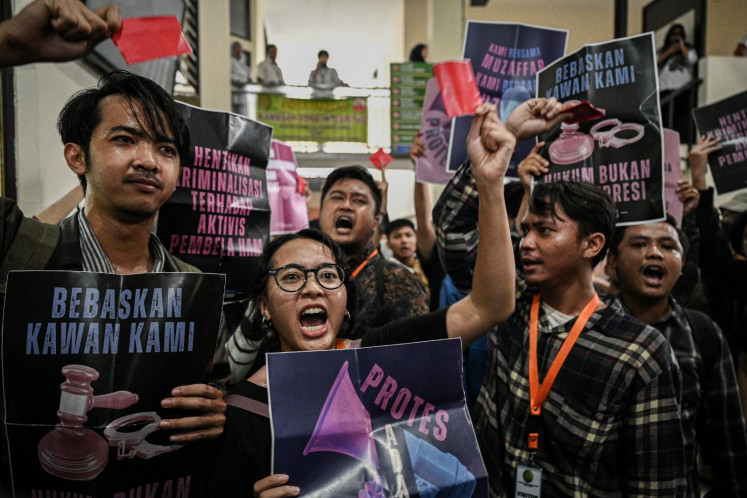Popular Reads
Top Results
Can't find what you're looking for?
View all search resultsPopular Reads
Top Results
Can't find what you're looking for?
View all search resultsUnsettled in the middle class
As long as all is well with the middle class, goes the general assumption, all is well with Indonesia. But what if all is not well and Indonesia’s middle class is no longer burgeoning?
Change text size
Gift Premium Articles
to Anyone
I
nvestors in Indonesia invariably laud the “burgeoning middle class” as one of several things the country has going for it. Often this is celebrated as both a key driver of economic growth and a key reason for companies’ interest in the local consumer market.
As long as all is well with the middle class, goes the general assumption, all is well with Indonesia. But what if all is not well and Indonesia’s middle class is no longer burgeoning?
Some figures shared by Statistics Indonesia (BPS) in late August seem to suggest just that. According to the latest data, 17.1 percent of Indonesians fall into the middle class this year, down from 21.5 percent in 2019. Meanwhile, the share of those below the middle class has grown.
As they prepare for uncertain times ahead, many middle-class Indonesians in and around Jakarta are trying to spend as little as possible rather than spending as much as they can. Their problem is that they find very little difference between the two.
In other words, they are struggling to maintain an urban lifestyle in the capital. If that sounds surprising, then it’s probably because we have the wrong idea of what the middle class is in Indonesia.
The government defines the middle class as those who spend between Rp 2.04 million (less than US$132) and Rp 9.91 million a month.
In other words, anyone spending Rp 10 million or more per month is upper class, though it is doubtful those spending Rp 10 million or Rp 11 million will feel “upper class” or refer to themselves by that label, at least not in Jakarta, though perhaps in remote villages.
Also, and this may come as a surprise given all the buoyant talk about Indonesia’s middle class, more than 80 percent of Indonesians are classed below it.
The statisticians have put a positive spin on it by categorizing almost half of the country as the “aspiring middle class”.
It is harder to spin the fact that one third of Indonesians are not even in the aspiring middle class, but calling most of them “vulnerable to poverty” rather than straight up “poor” takes the edge off it a bit.
The expenditure-based classification makes sense in a country with such a large informal sector, though it may misrepresent the situation of a few people who are not as badly off as their expenditure levels suggest.
Some young adults in Jakarta opt to live with their parents even though they have a solid income, allowing them to maintain a lifestyle their peers who pay for housing cannot afford while still putting away some money. The expenditures of most Jakartans, however, are quite close to their income.
It is worth noting that the vast majority of middle-class consumers are on the lower end of that Rp 2 million to Rp 10 million range. So when we talk about a typical middle-class Indonesian, we should picture someone spending Rp 4 million rather than Rp 8 million a month.
Many middle-class Indonesians find themselves having to support both their children and their parents, a phenomenon referred to as belonging to the sandwich generation.
Furthermore, middle-class monthly expenditure says little to nothing about the consistency or reliability of a person’s income. Many gig economy workers or other informal sector employees may come out as middle class on average, but not every month.
It is no wonder that middle-class Jakartans have told this paper they feel financially insecure and are wary of unexpected events, which could rob them at any moment of the modest material comfort they enjoy.
The middle class is indeed vital for Indonesia’s economy, and the government should strive to help more people enter that group, but even those already there often struggle to make it through to their next payday or worry about dropping out of the middle class altogether.
That is something to keep that in mind the next time somebody talks about Indonesia’s supposedly flourishing middle class.
Your Opinion Matters
Share your experiences, suggestions, and any issues you've encountered on The Jakarta Post. We're here to listen.
Thank you
Thank you for sharing your thoughts. We appreciate your feedback.











